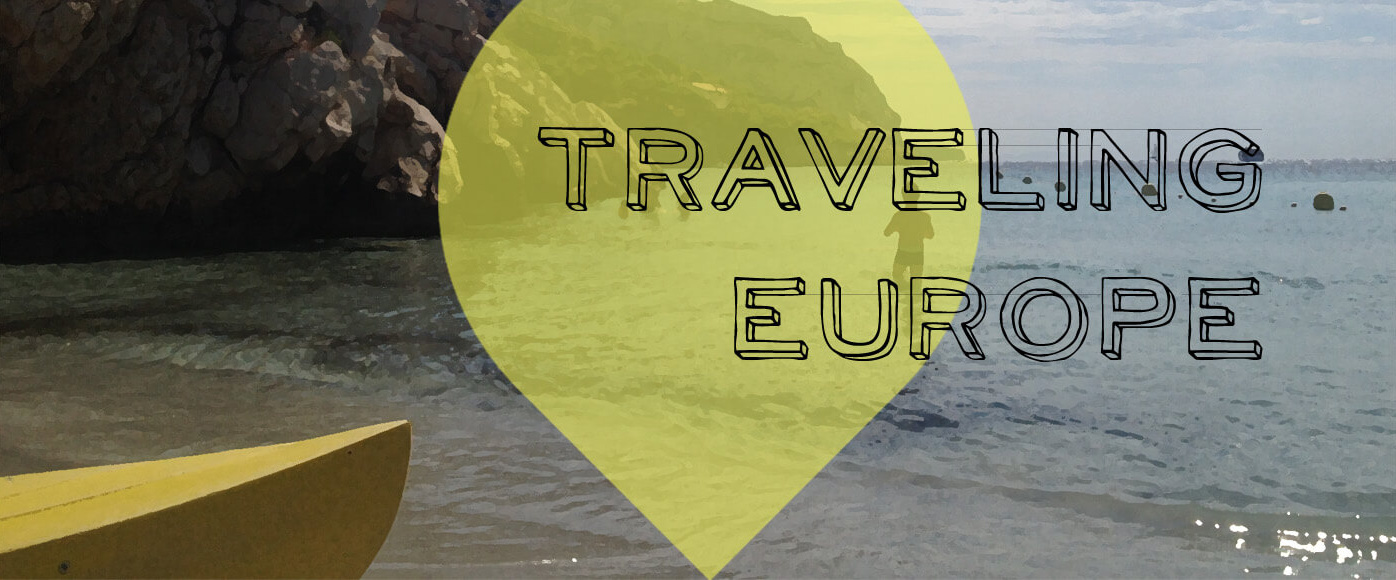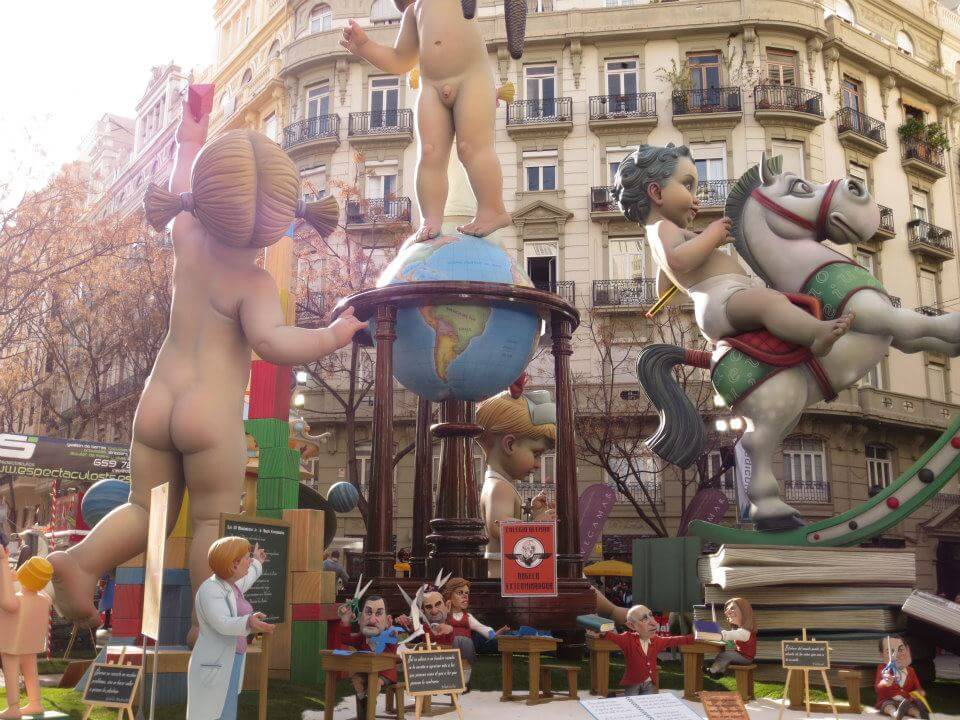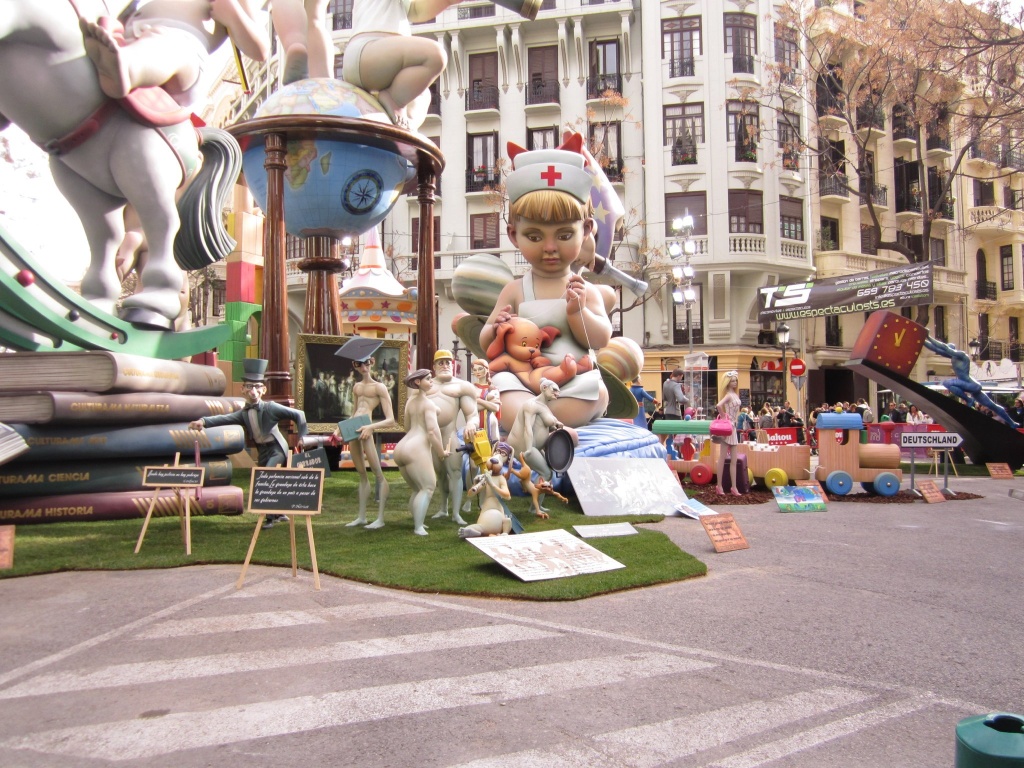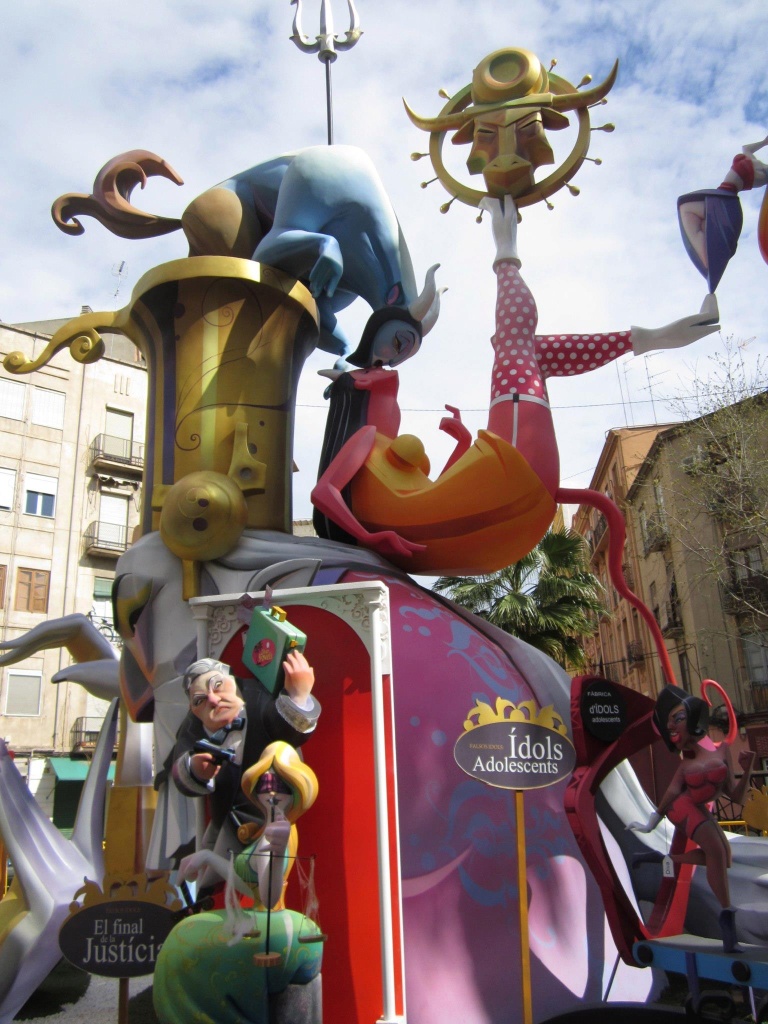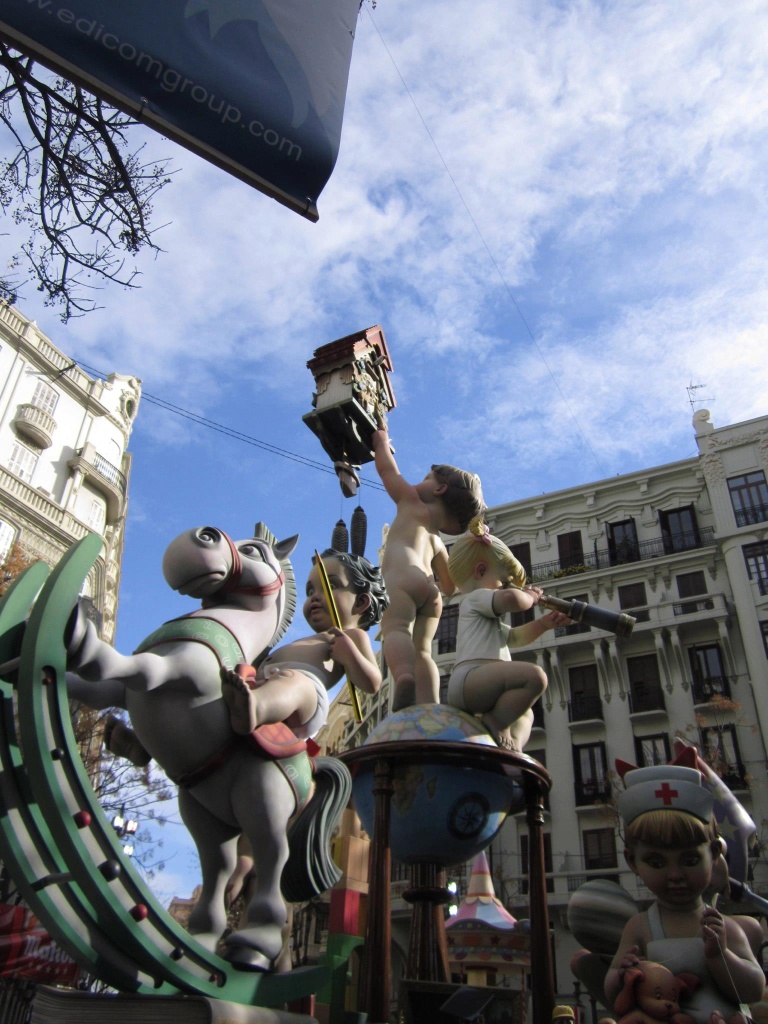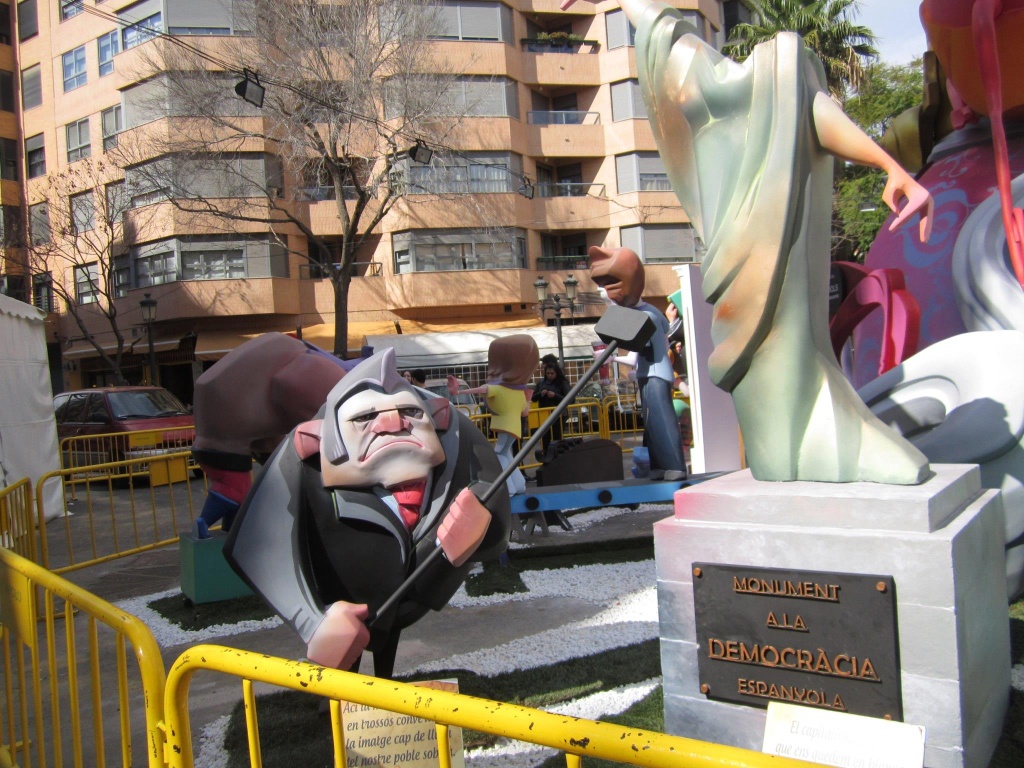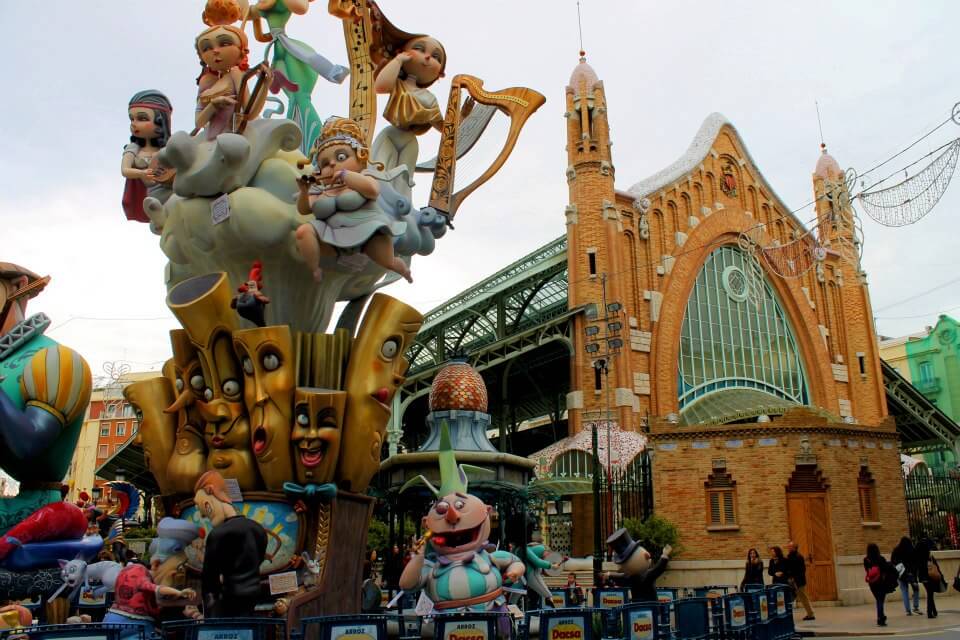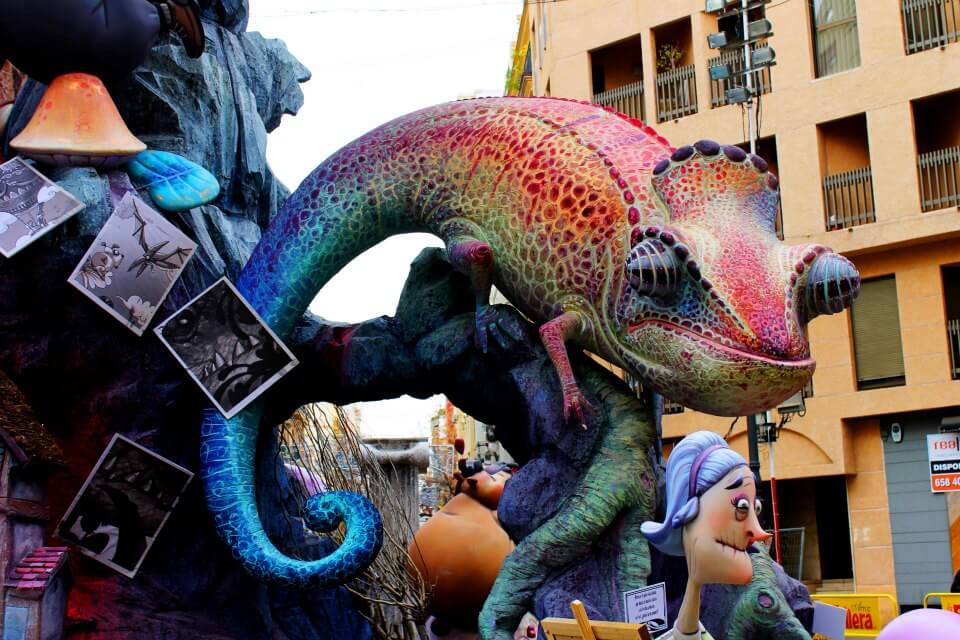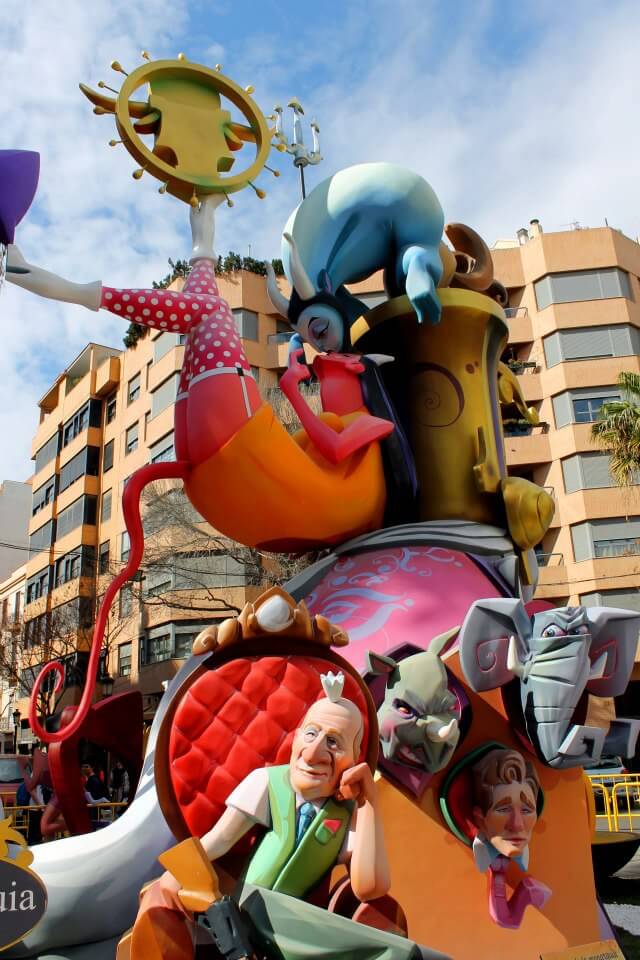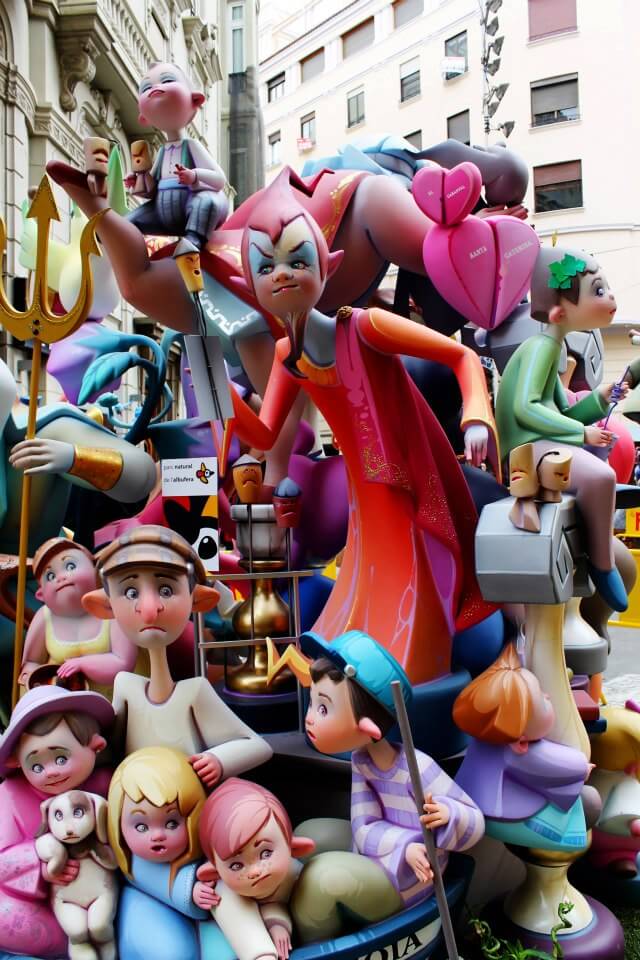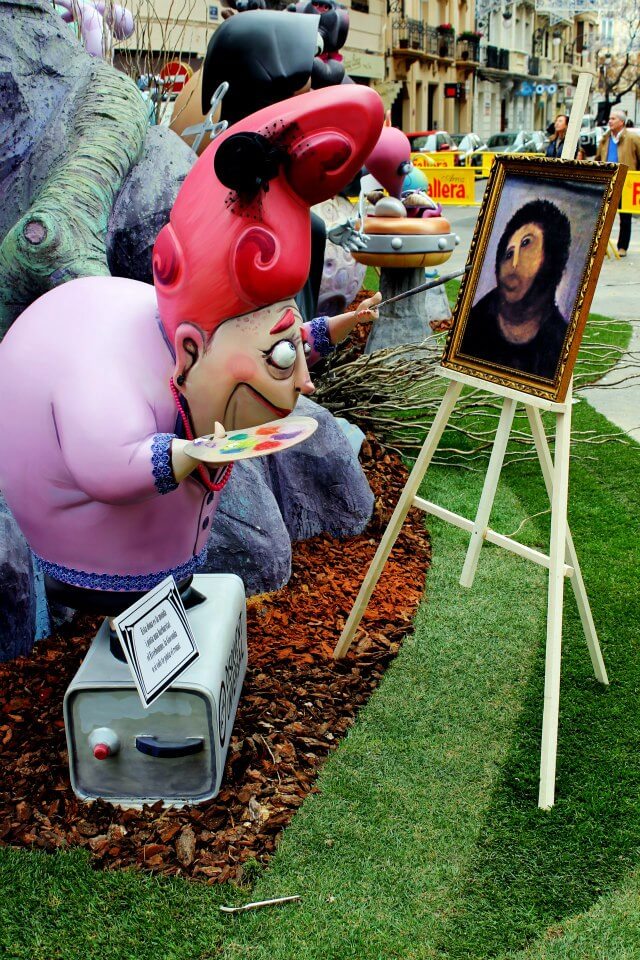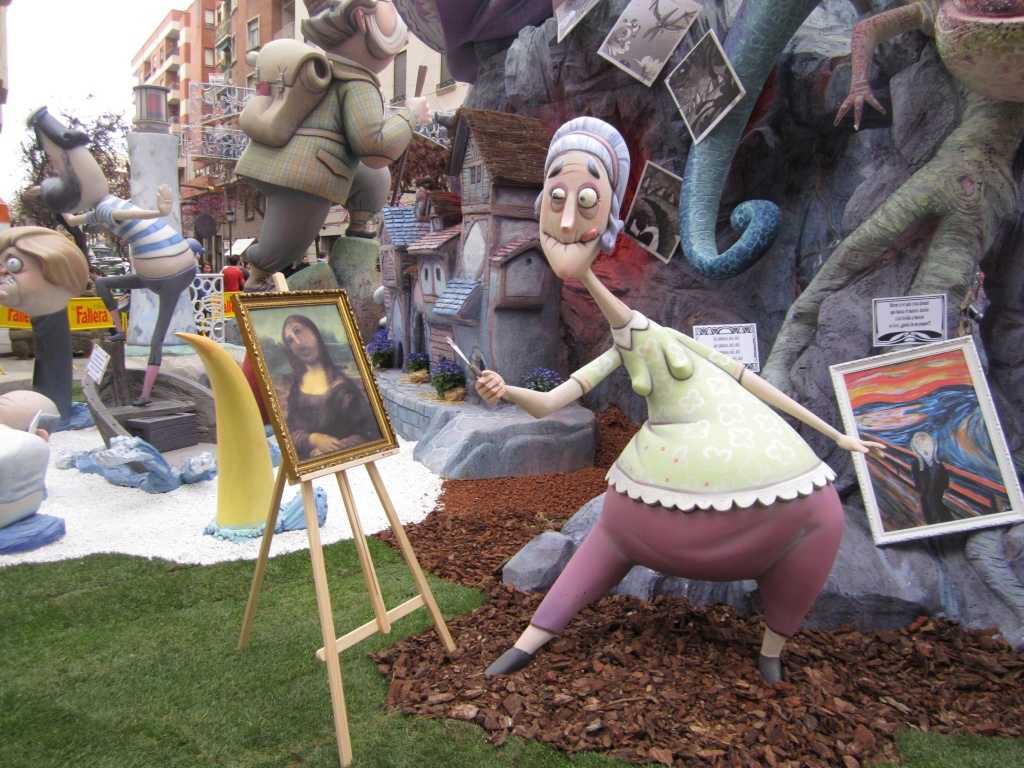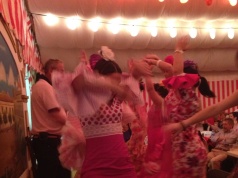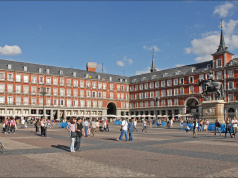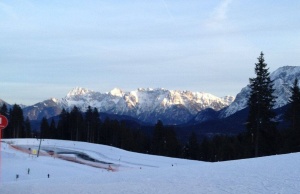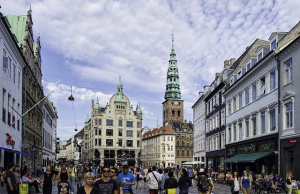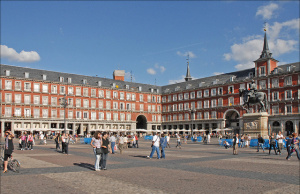The festival known as Las Fallas in Valencia is unlike anything I’ve ever been to before.
What is Las Fallas?
The name Las Fallas, referred to as Falles in English, literally means “the fires” in Valencian. Residents of each of the neighborhoods, known as the Casal faller, gather together, plan, organize and construct figures known as ninots (“puppets” or “dolls”), made of various materials such as cardboard, wood, paper-machè or plaster. These figures can cost up to €75,000 according to online research, though when I visited there, I was told they can cost up to €150,000!
You may be wondering how can something made of such cheap materials be so expensive?
Well, would you believe it if I told you they can be up to five stories tall? Intricately painted and designed by local artists, which can take the entire year to complete, and and then placed in a central area of each neighborhood (most likely in the middle of an intersection). This day is known as la plantà (the rising).
Aren’t yet convinced? Have a look at actually how cool they look!
Typically, the ninots of today are constructed to represent satirical scenes or current events, particularly in the political sense such as the Spanish politicians. I remember when we were there in 2013, there was a depiction of the botched restoration of the nearly century year old Fresco Ecce Homo by Elías García Martínez by amateur painter Cecilia Giménez.
So you may be thinking what happens with these figures? They just sit in the middle of road and then what happens?
Well, the answer is in the name of the festival: Las Fallas, the fires. On March 19th of each year, starting in the early evening, the residents prepare for the La Cremá (the burning). The ninots get burned to the ground. And not just lit on fire with a match or something as simple as that.
No, they get stuffed with fireworks.
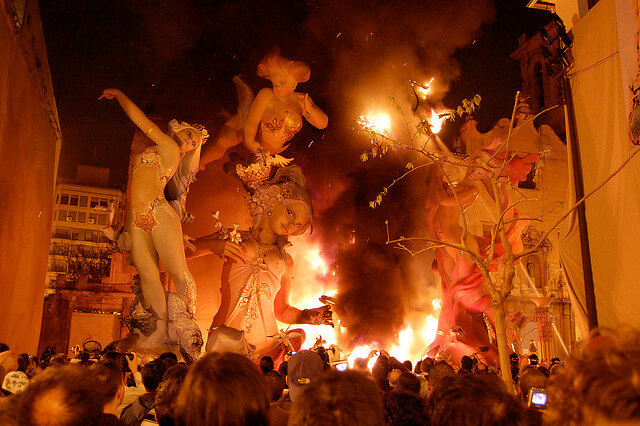
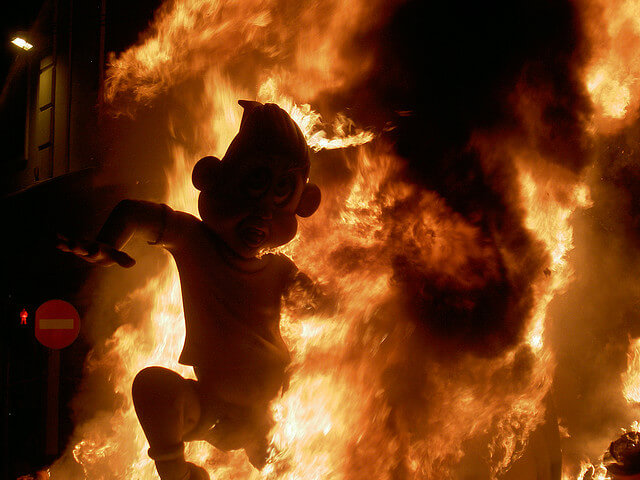
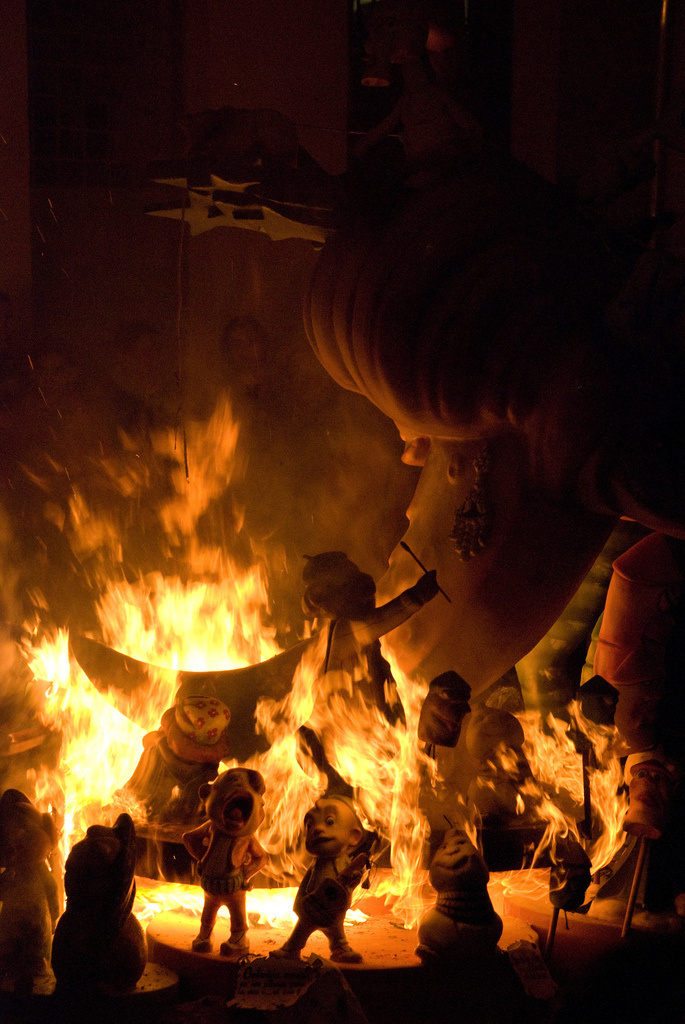
Each year, one ninot is spared from destruction by popular vote. This ninot, called ninot indultat (the pardoned puppet) is then placed in the local Musuem of the Ninots with the pardoned puppets from previous years.
So far this is what we’ve got. Each year, residents spend thousands of euros to build these intricate figures, devote countless hours designing and decorating them to every detail and in the end they completely destroy them by fire. The big question here is why?
What is the history behind Las Fallas?
Though not completely clear, the most widely recognized origins date back to the 16th century, when the residents of Valencia would use streetlights during the long nights of winter. These lamps were hung on a wooden device used for lighting, known as a parot, and when the spring began and these lights were no longer needed, they would burn it them on St. Joseph’s Day, the patron saint of carpenters. This would be a way to welcome the spring as well.
We were able to visit the festival on the 18th, the day before la Cremá, which was great because we had time to check out many of the ninots which are scattered throughout the city.
Besides the actual figures, there are also tons of other activities going on during the festival. Many residents dress in traditional clothing and play instruments such as the dolçaina (an oboe-like reed instrument) and tabalet (a kind of Valencian drum).
There are also fireworks in the evening and live music parties in the streets, equipped with food and drink.
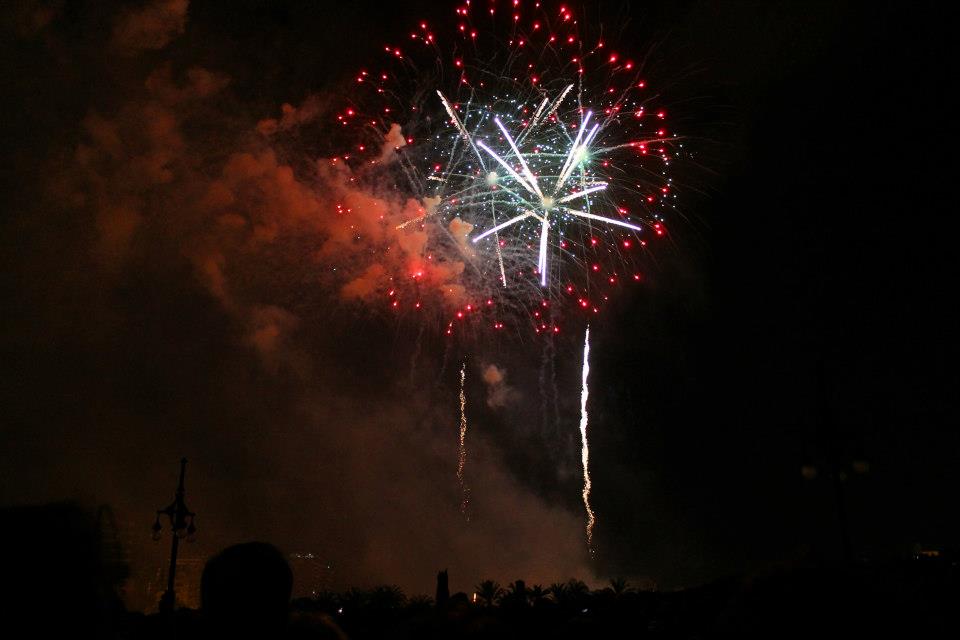
If you plan on going to Las Fallas, make sure to book accommodation ahead of time as up to 2 million visitors are expected to come to Valencia each year to participate.
Overall, this is one of the coolest, most unique festivals I’ve ever been to and it should definitely not be missed!
